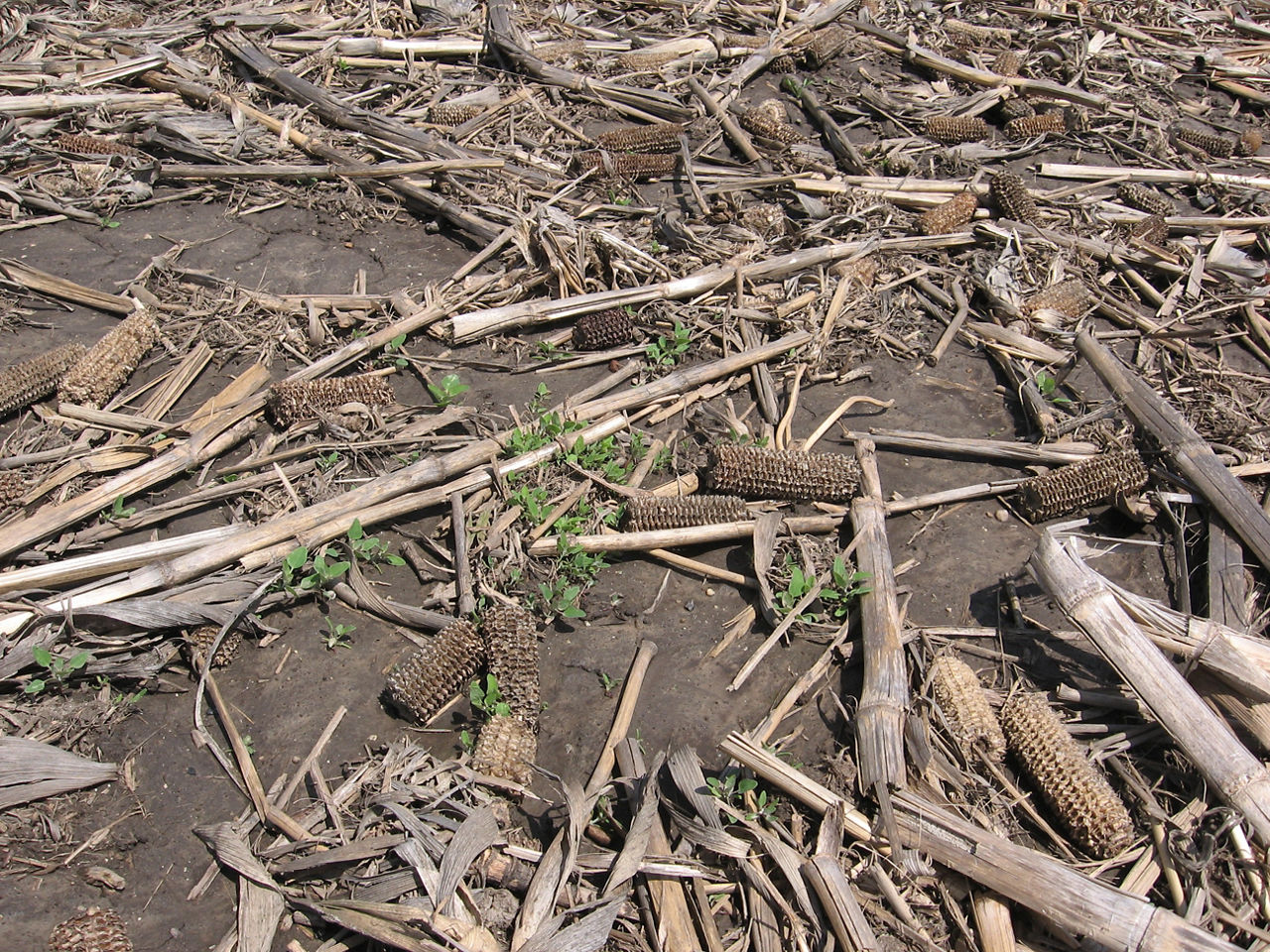Post-Harvest Weed Management in the South
January 9, 2025
- Post-harvest is a good time to initiate weed management plans for winter annual, biennial, and perennial weeds.
- Achieving and maintaining post-harvest weed management can help decrease weed pressure, herbicide-resistant weed species, and costs associated with field preparation for the following growing season.
- Controlling weeds after harvest may be more difficult in southern regions as good growing conditions for weeds extend for several months.
Impact of Weeds on Yield Potential
Weeds compete with crops for limited resources such as water, nutrients, light, and space. Seedling growth can also be impacted by weeds before the competition for resources begins. For example, corn seedlings have light-sensing compounds called phytochromes that can detect shifts in light. When weeds emerge at the same time as corn, the phytochromes trigger the corn to grow taller stalks and wider leaves to compete for light. This negatively impacts root production as resources are moved into shoot growth, and the reduced root development can lower yield potential.1 This can help explain higher-than-expected yield losses from early season weed pressure when the demand for light, water, and nutrients is limited. Unmanaged weed seed populations can also continue to limit yield potential.

Post-Harvest Weed Management Strategies
Weed control after harvest can be an important component of a weed management strategy. Post-harvest weed control can help reduce the workload in the spring prior to planting and lower weed seed production.
Fields should be scouted during and after harvest to identify the weed species present. Weeds should be controlled until temperatures are low enough to limit germination. Palmer amaranth can continue to germinate and produce seeds during the months between harvest and the first frost.2 Any summer annual weeds that were cut off during harvest need time to produce new leaf growth prior to applying a herbicide. Post-harvest weed management strategies include:
- Mowing or shredding crop residue, especially after harvesting corn or grain sorghum.
- Applying a non-selective herbicide to control emerged weeds.
- For example, an application of a Roundup® brand glyphosate-only agricultural herbicide with dicamba or 2,4-D.
- Using tillage to control small weeds.
- Post-harvest tillage can move weed seed towards the soil surface and encourage germination. To help prevent the spread of weed seed, clean tillage equipment before moving to a new field.
- Planting a cover crop can help suppress weed production in several ways: by directly competing with emerging weeds, releasing allelopathic compounds that inhibit growth, or altering the topsoil environment to hinder weed seed germination.3
For tough-to-control weeds, using multiple strategies like mowing and tillage can help increase control.2 It is important to remember that the main goal of the selected strategy is to prevent weed seed production. Work with your local brand representative to identify the best weed management strategy for your farm.
Herbicide Options and Considerations
Several herbicide options are available to help provide post-harvest weed management. A non-selective herbicide may be used after harvest to kill vegetation in the field. When glyphosate-resistant weeds are present, applying a non-selective herbicide containing paraquat can help control emerged weeds. For the most consistent control, apply a paraquat herbicide on tough-to-control weeds like Palmer amaranth before the weeds reach four inches in height.
To broaden and lengthen weed management, a contact herbicide can be tank mixed with a residual herbicide. Refer to product labels for permissible tank mix partners. Residual herbicide selection is critical since some products may remain active in the soil and may influence the selection of next year’s crop. Herbicide labels should be checked for plant back and rotational crop restrictions. Because of the array of herbicide products and strategies available, it is important to work with your local brand representative for the best options for your fields.
Keep in mind, it is important to allow time for regrowth of weeds to occur after harvest prior to making a herbicide application.
Fields with weeds that set seed in the fall may have dramatically higher weed populations during the next growing season. Knowledge of the weed species in a field and the competitiveness, emergence pattern, and density of the weed community can be used to develop effective herbicide programs. Controlling weed populations post-harvest can help continue the effort achieved to control weeds in-season and allow for more efficient use of herbicides and cultural practices during the growing season.
Sources
1Rajcan, L., Chandler, K.J., and Swanton, C.J. 2004. Red-far-red ratio of reflected light: a hypothesis of why early-season weed control is important in corn. Weed Science 52(5):774–778. https://doi.org/10.1614/WS-03-158R
2Thompson, C. 2019. After corn harvests, farmers should continue managing weeds. University of Georgia Cooperative Extension, CAES Newswire. https://newswire.caes.uga.edu/story/8050/weed-control.html
32024. Post-harvest weed control helps minimize spring weed emergence. Weed Science Society of America. https://wssa.net/2024/10/post-harvest-weed-control-helps-minimize-spring-weed-emergence/
Web sources verified 12/2/24. 1223_482201